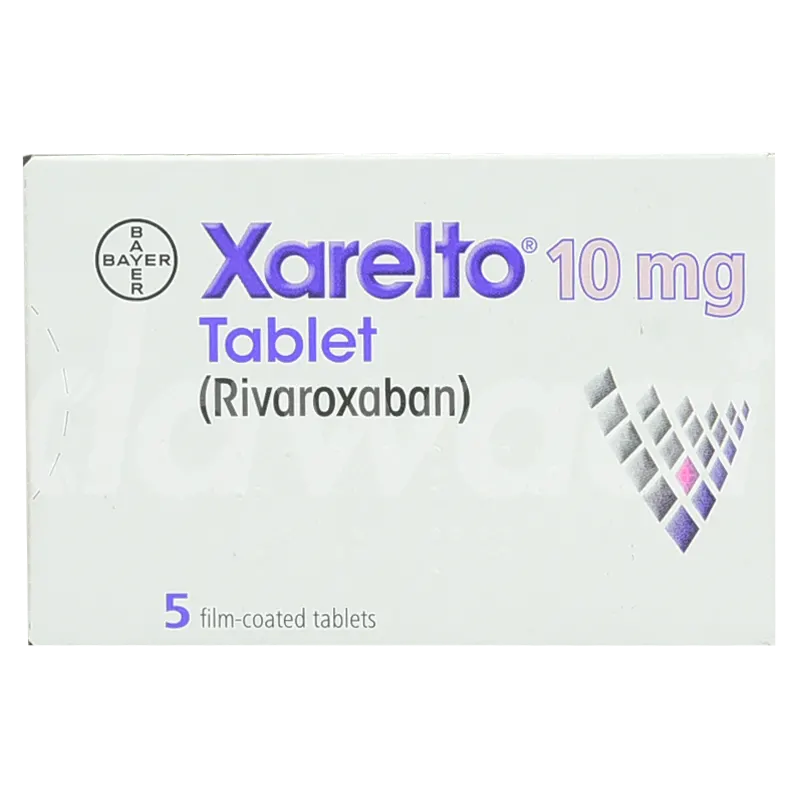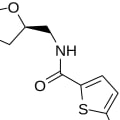Description
Xarelto 10 mg Tablets (Rivaroxaban) – Uses, Dosage, Side Effects & Precautions
Xarelto 10 mg tablets, containing the active ingredient rivaroxaban, are anticoagulant medications used to prevent and treat blood clots. They belong to a group of medicines known as antithrombotic agents and work by selectively inhibiting Factor Xa, an essential protein in the blood clotting process. By blocking Factor Xa, Xarelto reduces the tendency of the blood to form clots, lowering the risk of complications such as deep vein thrombosis (DVT) and pulmonary embolism (PE).


What is Xarelto Used For?
Xarelto 10 mg tablets are commonly prescribed for:
-
Prevention of blood clots in patients undergoing elective hip or knee replacement surgery
-
Treatment of deep vein thrombosis (DVT) and pulmonary embolism (PE)
-
Prevention of stroke and systemic embolism in patients with non-valvular atrial fibrillation
Dosage and Administration
-
Recommended dose: 10 mg taken orally once daily
-
Initial dose: 6–10 hours after surgery, provided haemostasis has been established
-
Duration of treatment:
-
Hip replacement surgery – usually for 5 weeks
-
Knee replacement surgery – usually for 2 weeks
-
-
Can be taken with or without food
-
Missed dose: Take as soon as possible, then continue the next day with your regular schedule
Key Features of Xarelto 10 mg Tablets
-
Active ingredient: Rivaroxaban (C19H18ClN3O5S)
-
Selective Factor Xa inhibitor
-
Tablet appearance: Light red, round, biconvex, with the Bayer cross on one side and “10” with a triangle on the other
-
No dietary restrictions (unlike warfarin). However, avoid grapefruit and grapefruit juice, as they can increase the risk of side effects.
How Xarelto Works
Rivaroxaban directly inhibits Factor Xa, blocking both the intrinsic and extrinsic pathways of the blood coagulation cascade. This prevents excessive thrombin generation and reduces the risk of clot formation.
Mechanism of Action:
-
Inhibits thrombin generation in whole blood and platelet-rich plasma
-
Reduces clot-bound Factor Xa activity (up to 97% inhibition at high concentrations)
-
Provides antithrombotic effects without requiring cofactors such as antithrombin III
Side Effects of Xarelto
Like all anticoagulants, Xarelto carries a risk of bleeding. Common side effects include:
-
Unusual bleeding or bruising
-
Dizziness
-
Headache
-
Nausea
Serious side effects (seek medical help immediately):
-
Prolonged or heavy bleeding
-
Blood in urine or stools
-
Severe headache or dizziness
-
Allergic reactions (rash, swelling, difficulty breathing)
Precautions While Taking Xarelto
-
Avoid activities that may cause injury or bleeding (sharp objects, rough sports, climbing ladders)
-
Use a soft toothbrush and electric razor to reduce bleeding risk
-
Do not stop taking Xarelto suddenly without consulting your doctor – this can increase the risk of blood clots or stroke
-
Inform all healthcare providers that you are on Xarelto before surgery or dental procedures
-
Avoid combining with other blood thinners, NSAIDs, or certain antidepressants, unless prescribed
Xarelto Use in Pregnancy & Breastfeeding
-
Pregnancy: Not recommended unless clearly needed. Rivaroxaban crosses the placenta and may increase bleeding risks for both mother and baby.
-
Breastfeeding: Small amounts pass into breast milk. While considered relatively safe by the American Academy of Pediatrics, caution is advised. Infants should be monitored for bleeding or bruising.
Storage Instructions
-
Store at 20°C to 25°C (68°F–77°F); short excursions between 15°C–30°C (59°F–86°F) are permitted
-
Keep in the original packaging until ready to use
Summary
Xarelto 10 mg (Rivaroxaban) is a modern, effective oral anticoagulant used to prevent and treat blood clots, especially after hip or knee replacement surgery. With fewer dietary restrictions than older anticoagulants like warfarin, Xarelto offers convenience and strong clinical efficacy. However, patients must take precautions to avoid bleeding and follow their doctor’s guidance closely.







Reviews
There are no reviews yet.